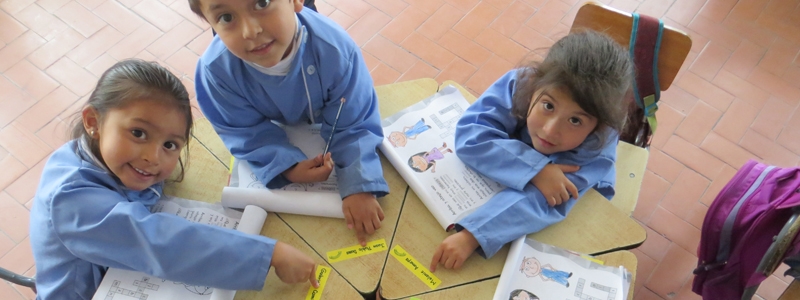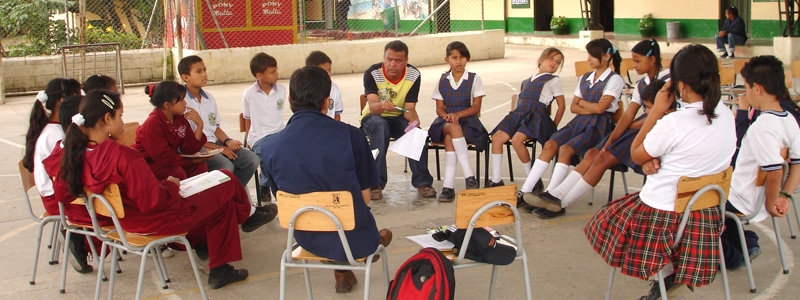Problem: The project, which was conceived in Columbia in 1974 and begun in 1975, was designed to combat school absenteeism, failing students, the devaluation of teachers, the distancing of the schools from the community and the scarcity of learning materials in the country's rural schools. This educational model, which was developed by Vicky Colbert, Oscar Mogollón and Beryl Levinger, deemphasizes memorization and passive learning in favor of focusing on the student, promoting their participation, teamwork, the development of apprenticeship activities and the implementation of personalized, active learning practices. The aim is to improve the quality, relevance and efficiency of education. The Fundación Escuela Nueva was created in 1987. The program began in rural schools, where one or two professors taught students from different school years. Currently, the foundation also benefits disenfranchised urban populations as well as migrants.

Solutions: Learning is centered on the students and focuses on collaboration. The curriculum involves activities that are relevant to the life of the students in terms of their culture and social dynamic and fosters the application of the knowledge they acquire at home and in the community. Notable elements of the learning process include the distribution of educational guides, access to libraries, the singing of songs that encourage learning and the promotion of activities that show students how to learn on their own.
The educational guides mentioned above contain lessons that foster teamwork among the students. The idea is to get the students to study together, helping one another through discussions between one another and with the teacher. Each student can move forward at his own pace and plan his studies with the help of the teacher. The teaching schedule and the student evaluation methods are flexible. The idea is to develop 21st century skills, such as learning how to learn, teamwork, decision-making, leadership and the honoring of deadlines.
The classroom is used as a fundamental instrument in the learning process. Small groups of students work together on modules that are adaptive, designed to promote interaction and encourage the students to communicate and engage in critical thinking. The classroom has learning areas where the students can display projects and other work they have produced. The classroom also has a small library.
Students participate in commissions, known as student governments, which bring together children of different ages, school years and genders. The aim is to develop democratic values, encourage civic engagement and peaceful coexistence, in addition to promoting social and emotional development.
Teachers act mainly as facilitators. They have group discussions with students, monitor them and provide feedback on their work. To do so, teachers receive hands-on training, participate in learning circles and help one another promote positive change
.
The school maintains a strong, close relationship with the parents and the community, both of which play a fundamental role in academic life.

Outcomes: Students therefore acquire, in addition to academic knowledge, non-cognitive abilities and learn to think and work at their own pace. As a result, their self-esteem also increases. They learn to work as a team, cooperatively. Boys and girls participate equally. Everyone develops entrepreneurial abilities and leadership qualities. The project keeps students in school, improves their academic performance and reduces the amount of students that have to repeat a school year. It also develops good values and social skills amongst students, such as democratic behavior, altruistic attitudes, good citizenship and peaceful coexistence. The project has spread to another 16 countries, including Colombia. Currently, it has been implemented in Brazil, Guiana, Nicaragua, the Dominican Republic, Chile, East Timor, Panama, Guatemala, El Salvador, Uganda, Peru, Honduras, the Philippines, Vietnam, Paraguay and Mexico. This educational model was recognized by the World Bank as one of the three most successful innovations of significant impact on public policy in the world in 1989. In 2000, Unesco identified Colombia as the only country in Latin America, aside from Cuba, where rural schools surpass the academic performance of urban schools, with the exception of some larger cities. The project was also considered to be one of Colombia's three greatest accomplishments in 2000 by the United Nation's Report on Human Development and was one of the winners at the Wise Awards in 2013.







